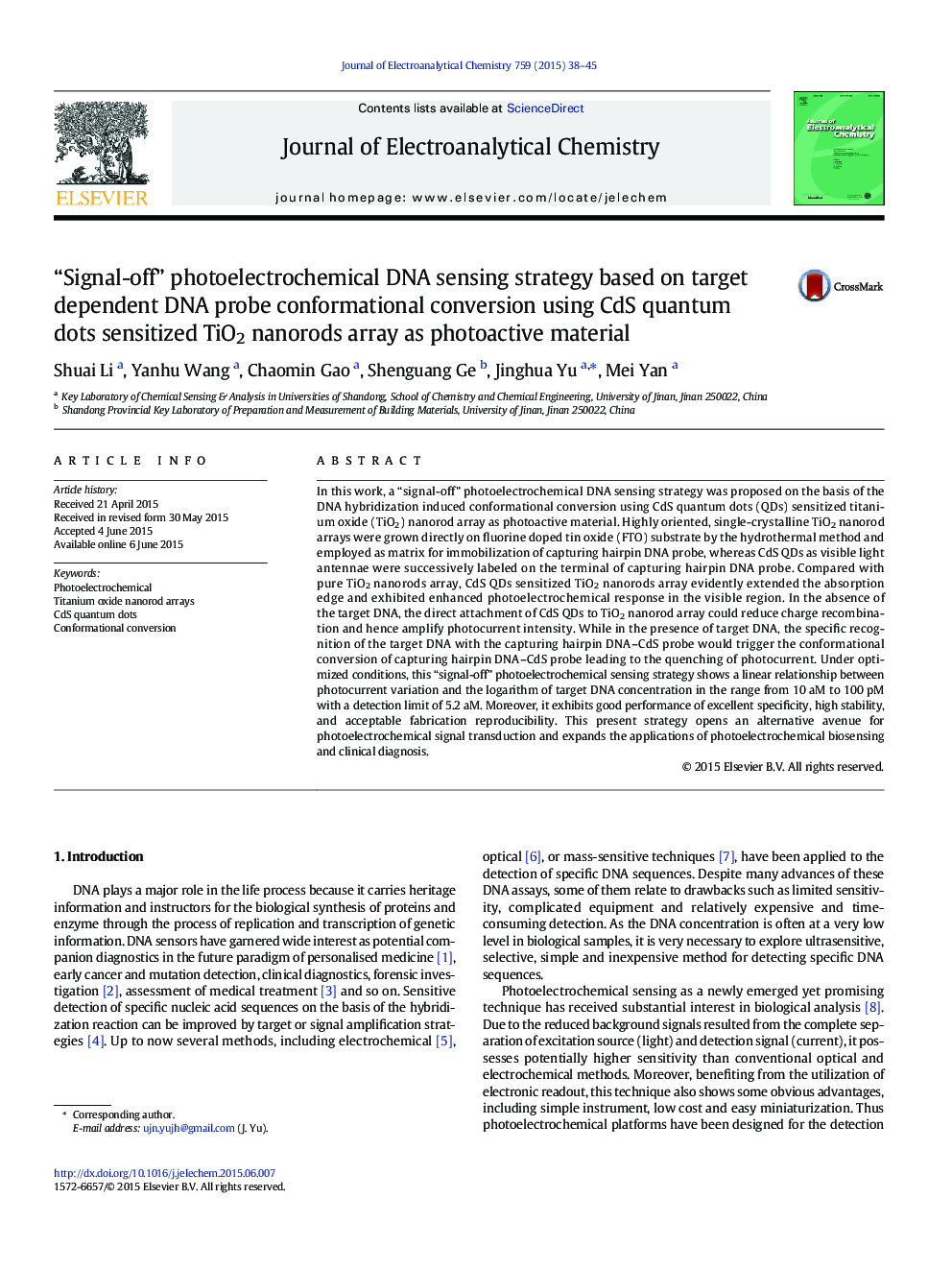| کد مقاله | کد نشریه | سال انتشار | مقاله انگلیسی | نسخه تمام متن |
|---|---|---|---|---|
| 218130 | 463184 | 2015 | 8 صفحه PDF | دانلود رایگان |

• A “signal-off” photoelectrochemical DNA sensing strategy based on DNA conformation change was proposed.
• A fluorine doped tin oxide (FTO) three-electrode device was designed.
• TiO2 nanorod array oriented grown on FTO device acted as photoelectrochemical matrix.
• CdS quantum dots (QDs) was used to sensitize TiO2 nanorods array.
In this work, a “signal-off” photoelectrochemical DNA sensing strategy was proposed on the basis of the DNA hybridization induced conformational conversion using CdS quantum dots (QDs) sensitized titanium oxide (TiO2) nanorod array as photoactive material. Highly oriented, single-crystalline TiO2 nanorod arrays were grown directly on fluorine doped tin oxide (FTO) substrate by the hydrothermal method and employed as matrix for immobilization of capturing hairpin DNA probe, whereas CdS QDs as visible light antennae were successively labeled on the terminal of capturing hairpin DNA probe. Compared with pure TiO2 nanorods array, CdS QDs sensitized TiO2 nanorods array evidently extended the absorption edge and exhibited enhanced photoelectrochemical response in the visible region. In the absence of the target DNA, the direct attachment of CdS QDs to TiO2 nanorod array could reduce charge recombination and hence amplify photocurrent intensity. While in the presence of target DNA, the specific recognition of the target DNA with the capturing hairpin DNA–CdS probe would trigger the conformational conversion of capturing hairpin DNA–CdS probe leading to the quenching of photocurrent. Under optimized conditions, this “signal-off” photoelectrochemical sensing strategy shows a linear relationship between photocurrent variation and the logarithm of target DNA concentration in the range from 10 aM to 100 pM with a detection limit of 5.2 aM. Moreover, it exhibits good performance of excellent specificity, high stability, and acceptable fabrication reproducibility. This present strategy opens an alternative avenue for photoelectrochemical signal transduction and expands the applications of photoelectrochemical biosensing and clinical diagnosis.
Figure optionsDownload as PowerPoint slide
Journal: Journal of Electroanalytical Chemistry - Volume 759, Part 1, 15 December 2015, Pages 38–45